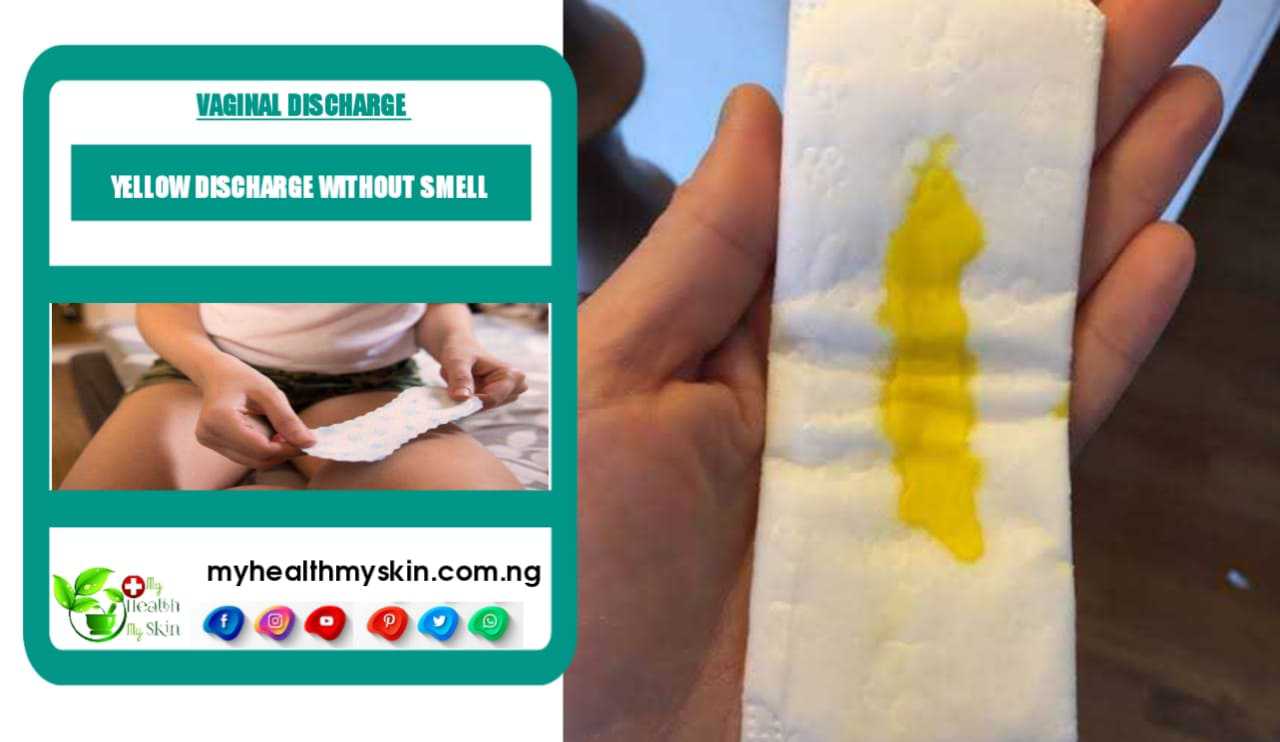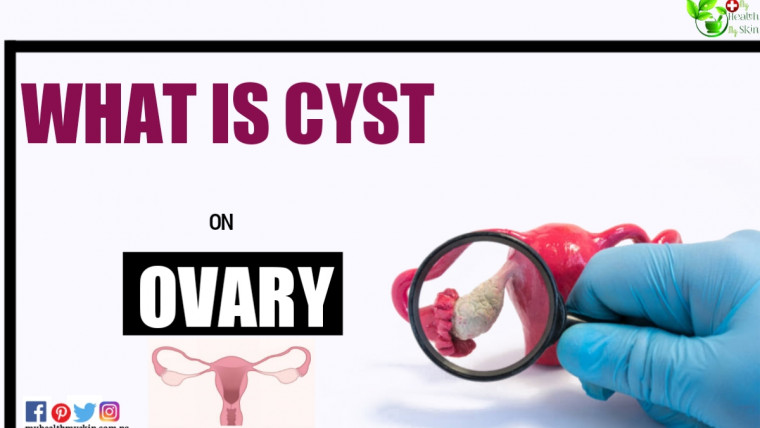It is no secret that genital discharge is familiar to every woman and girl. And even very young girls have it, which often causes concern to parents. Sometimes white, sometimes yellowish and even brown.
Almost all women are characterized by increased attention to what is happening in their bodies, and of course, yellow vaginal discharge can not be ignored.
Should I Sound The Alarm Or Is It Normal?
Such topics are often discussed, and women’s opinions are polar. Thus, try to clarify the essence of the issue objectively.
Yellow Discharge Without Smell: Should You Panic? Continue reading to find out!
There are vaginal discharges that are considered physiological (normal) in the regular functioning of the lower genital tract (see below).
However, certain types of vaginal discharge are related to some pathologies (diseases), mostly of infectious origin and which should always be evaluated and treated.
The type of vaginal discharge, defined by its color, odor, characteristics and other associated signs and symptoms, will give us an idea of certain pathology.
However, diagnosis and treatment should always be carried out by your Gynecologist.
[lwptoc]
Normal vaginal discharge
The lower genital tract is made up of the exocolon (outer part of the cervix), the vagina, and the vulva.
In addition to its important and indispensable role for reproduction, this is a protective system for the upper genital tract (internal organs such as the uterus and fallopian tubes), as it prevents the abnormal multiplication of microorganisms that can become pathogenic.
In addition, it is also an outlet for physiological genital secretions (female discharge).
These fluids are produced by cells in the vagina, mucus in the cervix, secretions from the upper genital tract, and sloughing cells.
This physiological vaginal discharge is normal and necessary for the humidification and lubrication of the vagina, essential to perform its function.
In the adult woman, the vulva and vagina are essential in the defense against infections through their anatomy and physiology.
Anatomically, there is a natural closure of the vulva introitus (inlet to the vulva) and the walls of the vagina.
Physiologically, there is a desquamation of the surface cells, the creation of an acidic pH of the vagina by Doderlein’s bacilli (lactobacilli) and the presence of various microorganisms in the vagina (in addition to lactobacilli) that inhibit the development of other pathogens.
There are several factors that can lead to an imbalance in the vulvo-vaginal system and promote an infection (vulvovaginitis):
- Use of inappropriate clothing that prevents ventilation and increases the local temperature;
- Regular and prolonged use of sanitary napkins or tampons;
- Excessive vaginal irrigations;
- Changes in the cervix (ectropion) with abundant secretions that promote alkalinization;
- Sexual promiscuity (multiple sexual partners);
- Some contraceptives (eg, the pill);
- Antibiotics;
- Pregnancy;
- Corticosteroids or immunosuppressants.
Causes, types of vaginal discharge
There are vaginal discharges that are physiological (normal), that do not require any kind of treatment, and are essential for the normal functioning of the lower genital tract.
Thus, it is normal to have a more abundant vaginal discharge in certain situations such as in the periovulatory period (transparent gelatinous discharge, egg white type) and premenstrual (white discharge before menstruation), in sexual stimulation (sexual intercourse) and in pregnancy.
These types of discharge are usually colorless (transparent) or white (white liquid), they can be more or less thick (watery or gelatinous), they have no smell and do not cause symptoms.
According to the characteristics of each discharge, different infectious situations may be involved.
In order to have a more correct orientation, one must take into account and characterize the symptoms that accompany the discharge and the clinical evaluation of the discharge must be carried out by the gynecologist.
White or light yellow discharge, thick, lumpy, in small patches (like curd), usually odorless, can be caused by a fungal infection, candidiasis.
In this type of infection, the discharge is accompanied by symptoms such as pruritus (itching) that gets worse at night and in the premenstrual phase (before menstruation), burning and dyspareunia (pain with sexual intercourse).
Yellowish or greenish, fluid, odor or foul-smelling discharge (bad smell) can be caused by trichomoniasis infection. Symptoms of flushing (red) and edema (swelling) of the vulva are usually associated.
A large, creamy, grayish-white discharge with a strong unpleasant odor that worsens with the menstrual period (menstruation) or sexual intercourse (“rotten fish smell”) may be associated with an infection called bacterial vaginosis.
It is not usually associated with symptoms of pruritus (itching) but burning is common.
Symptoms and signs of seriousness of an infection are a general feeling of malaise, pelvic pain (“pain in the bottom of the belly”) and fever, and a more complex therapeutic approach (treatment) may be indicated.
The discharge can also be described as brownish (brown) or light brown, with dark or black blood, pink before menstruation, or red (blood) outside of menstruation days.
This type of discharge can be due to different types of pathologies of the lower genital tract (vulva, vagina and cervix) and upper (uterus, tubes and ovaries), and a detailed evaluation by the gynecologist is essential.
Yellow discharge without smell

First, although the yellow discharge is odorless, it is still worth informing the gynecologist who decides whether to remove a stain to rule out the presence of various inflammatory processes that have often gone unnoticed.
The presence of jaundice is not the norm, but if there are no other unpleasant symptoms such as unpleasant odor, burning, itching and pain, it may not be a cause for concern.
Otherwise, you should see a gynecologist immediately, especially if the secretions are dark yellow. There are several reasons for this pathological symptom.
However, first of all, the presence of the odor should alert you. Generally, women eat fish, onions, etc. Characterized as odor.
Of course, to put it mildly, there is nothing less pleasant, but the body thus shows the need to move.
The formation of dark yellow secretions may be a manifestation of an allergic reaction to underwear and intimate hygiene products. Certain microorganisms can also cause specific yellow discharge.
If the color of the secretions changes to green, the problem indicates the development of serious disorders. For example, it may indicate the presence of venereal diseases.
They are also characterized by itching, pain during urination, and burning sensations in the area.
If the secretions are light yellow, they are most likely caused by inflammation of the fallopian tubes or ovaries and various bacterial infections in the uterus.
The first is the presence of various inflammatory processes that are exacerbated by pregnancy or other factors.
During this period, immunity is weakened, which allows pathological microorganisms to penetrate the uterus, accumulate there and create this unpleasant symptom.
In addition, secretions can occur as a result of spontaneous abortion. Therefore, it is necessary to react to them as quickly as possible.
However, odorless yellow discharge, which women do not immediately notice, can also be an alarming signal. First of all, let’s list the cases where this is considered normal:
- During ovulation, when the so-called “yellow body” comes out.
- At the beginning of menstruation (or after it). In this case, the odorless yellow discharge is just a small infiltration of blood clots.
- The color of the secretion may change during pregnancy and breastfeeding. All this is due to the reconstruction of a woman’s hormonal background during this period.
- In addition, there may be a change in the color of the discharge when taking oral contraceptives that contain small amounts of the hormone.
These are the main reasons, but it is necessary to pay attention accompanying factors.
As soon as you feel itching, discomfort, burning, accompanied by a change in the color of the discharge, you should contact your gynecologist to rule out inflammatory processes, such as inflammation of the ovaries, appendages and even cervical erosion.
There is another situation where odorless yellow discharge is considered the norm.
A few hours after unprotected intercourse (if there is a discharge in the woman’s vagina), the discharge also changes color.
This is a natural reaction to male sperm, which also changes the vaginal microflora.
However, in such cases, they manifest themselves within a maximum of 10 – 12 hours after sexual intercourse.
So do not panic in advance, but in any case, it is better to inform the gynecologist about the things that are bothering you.
In addition to the possible tests that will allow you to accurately determine your condition, your doctor will help you choose the right oral contraceptives and check your hormone levels.
Oh, and don’t forget that here at myhealthmyskin.com.ng we are always gathering important health and skin care solutions for those who experiencing health issues.
Stay on top of our latest content and delve into the topic of discharge on the women’s health category section.
Prevention
Intimate hygiene
Some attitudes and measures are a good form of prevention, allowing to reduce the probability of the woman contracting an infection.
Feminine intimate hygiene should be performed only in the woman’s anogenital region in order to keep it free from moisture and residues.
Except in situations in which the doctor prescribes, products should not be placed in the internal region of the vagina, and only the pubic mound, the labia majora and minora and the perianal region should be washed.
According to their characteristics, intimate hygiene products can be cleaning, moisturizing, protective or to facilitate sexual intercourse.
Intimate hygiene should be carried out with running water and hygiene products (preferably liquid, hypoallergenic and acidic pH), with movements that avoid bringing the perianal content to the vulvar region, one to three times a day (depending on the climate, weight of the women and physical activity).
Vaginal washes (vaginal douche) with water or other products are not recommended. “Sitz baths” are only recommended when medically indicated.
Hydration should be done in women with dry skin, especially in menopause, only in the skin regions. Moisturizers should be water-based vaginal gels or creams with an acidic pH.
The systematic use of a sanitary napkin is not recommended and clothing that allows for local ventilation must be worn.
The woman should not use any type of homemade or natural remedies, except for the measures described above, under penalty of worsening her state of health and making a subsequent diagnosis by the doctor difficult.
She should take any type of medication always according to the indications of her Gynecologist Doctor (specialist in gynecological diseases).
You may also be interested in:
Discharge during pregnancy: should you panic?
Normal And Abnormal Discharge In Women
How to get periods in one hour – Learn 9 easy home remedies
How to cure vaginal candidiasis
Itchy vagina while pregnant? See what to do and how to treat vaginal Infection
Vaginal laxity: 3 best safe ways to tighten your vagina
Do not attempt using these: 10 home remedies to tighten your vagina
Readers Question
What is a yellowish discharge with no smell?
Yellow discharge without a smell can bean early sign of pregnancy or a period is coming. This is as a result of the tint of yellow signals that there is some new or old blood in the mucus.
What infections cause yellow discharge?
- Yeast infection. A yeast infection, also know as candidiasis, is a relatively frequent type of infection caused by an overgrowth of Candida albicans fungs within the vagina.
- Sexually transmitted infections (STIs).
- Urethritis.
- Pelvic inflammatory disease.
Can a yeast infection be yellow?
According to study, If the inflammation has spread to the external genitals, areas such as the labia might be red and swollen too. Vaginal yeast infections often lead to a whitish-yellowish vaginal discharge. It can be watery or chunky, a bit like curdled milk or cottage cheese. Sex can be painful when you have a yeast infection.
Can yellow discharge go away on its own?
If you have a short menstrual cycle, sometimes you may notice brownish-yellow discharge right after your period. Menstrual blood may give your discharge a brownish-yellow tint, which should go away by itself over a couple days. However, noticing yellow discharge by itself shouldn’t be a cause for concern.
How can i stop yellow discharge?
- Avoid douching. Douching can easily destroy good bacteria that prevent vaginal infections.
- Wear cotton underpants and avoid wearing tight clothes
- Use protection
- Know your partner
- Avoid hot bathtubs.
- Avoid scented products
- Keep your vagina clean
If you want to read more articles similar to Yellow Discharge Without Smell, we recommend you visit our Women’s Health category.








